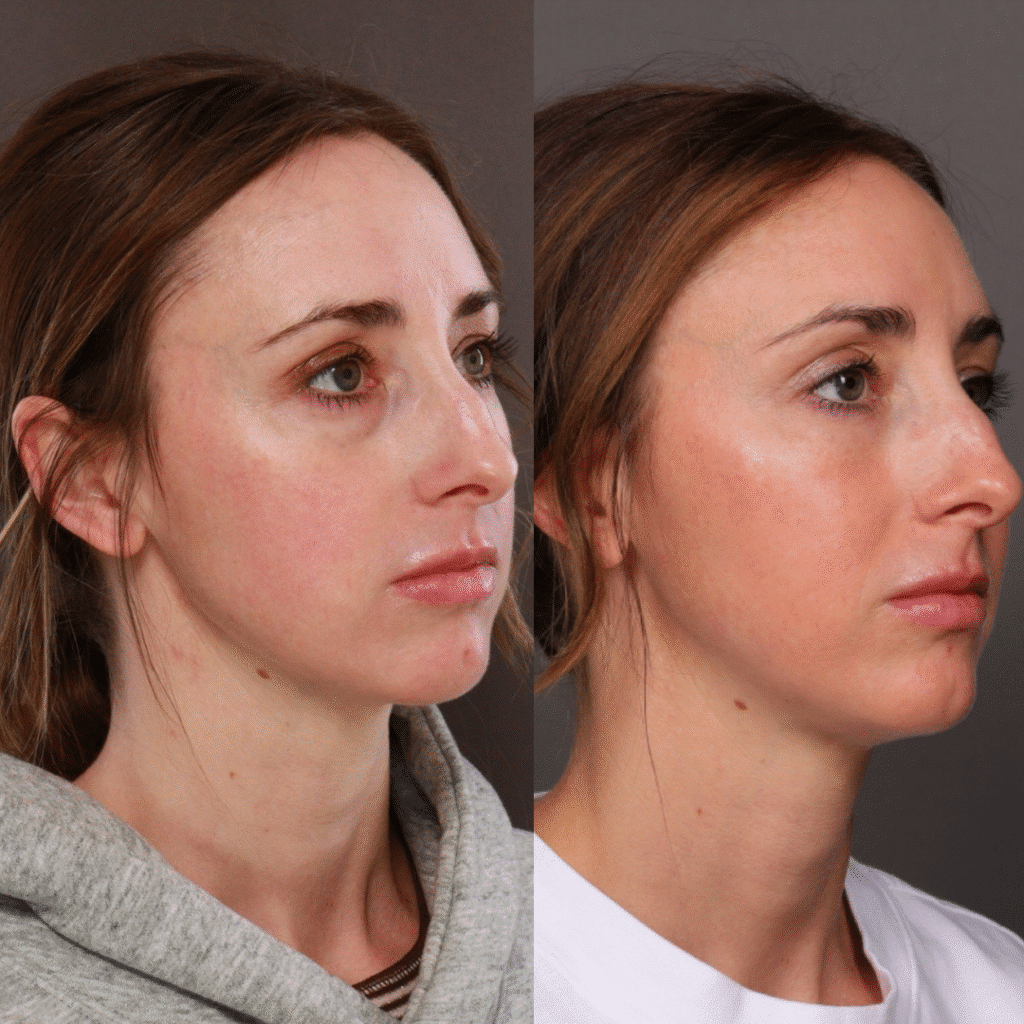Many people feel self-conscious about their eyelids, whether it’s sagging skin that interferes with their vision or simply a desire for a more youthful appearance. This is where blepharoplasty, or eyelid surgery, comes into play. In this article, we’ll explore the ins and outs of blepharoplasty—what it entails, how it can boost your confidence, and what to consider before diving in. From potential risks to outcomes and recovery tips, we’ll guide you through everything you need to know to make an informed decision about whether this procedure might be right for you. Let’s uncover the details together!
Yes, blepharoplasty can be worth it for many individuals seeking to enhance their appearance and regain confidence, as it effectively rejuvenates tired-looking or droopy eyes, improves vision by addressing sagging skin, and boasts a relatively short recovery time. However, it’s essential to consider potential risks, costs, and the importance of choosing a qualified surgeon to ensure satisfactory results.
What is Blepharoplasty?
Blepharoplasty, often referred to as eyelid surgery, is a cosmetic procedure aimed at enhancing the appearance of the eyelids by removing excess skin, fat, and muscle. It serves both aesthetic and functional purposes, making it an appealing option for individuals who want to rejuvenate their facial appearance while also addressing practical concerns such as impaired vision due to sagging eyelids.
Imagine looking into the mirror and no longer feeling burdened by heavy lids—the potential transformation in self-perception can be profound.
The surgery primarily targets the upper and/or lower eyelids. During an upper eyelid blepharoplasty, the surgeon typically removes excess skin and fat that has drooped over time. It focuses specifically on lifting the eyelid area for a refreshed look. On the other hand, lower eyelid surgery may involve repositioning or removing fat to eliminate bags under the eyes. This distinction highlights that blepharoplasty isn’t a one-size-fits-all solution; each procedure can be tailored to meet individual needs and aesthetics.
Interestingly, this procedure has gained tremendous popularity. This surge reflects a growing societal emphasis on personal appearance alongside increasing awareness of cosmetic options available. It’s not only older patients seeking improvement though; younger individuals also opt for eyelid surgery for various reasons. For instance, congenital conditions such as drooping eyelids are common and can lead to dissatisfaction with one’s appearance from an early age.
Understanding the fundamental principles behind this procedure sets the stage for exploring its variations and outcomes—each providing unique benefits tailored to individual circumstances.
Types of Eyelid Surgery
Upper Eyelid Surgery
Upper blepharoplasty is designed to remove excess skin and fat from the upper eyelids. This procedure often addresses drooping eyelids that can diminish peripheral vision, making daily activities cumbersome.
Imagine someone named Lisa who struggled to read her favorite books because her eyelids were obscuring her vision. After undergoing the surgery, she noticed a significant improvement not just in her vision, but also in the overall aesthetic of her eyes. Patients frequently report feeling a sense of newfound vitality; their eyes no longer wear a tired look. As a result, this type of surgery enhances appearance while contributing to improved functionality.
Explore upper eyelid transformations at Utah Facial Plastics. Have questions? Give us a call at: 801-960-3137
Lower Eyelid Surgery
Similarly, lower blepharoplasty targets the area beneath the eyes, effectively addressing issues like puffiness and under-eye bags. By removing excess fat and skin, this procedure helps create a smoother, more youthful appearance.
Picture Greg, who works long hours and constantly received comments about looking fatigued. After opting for lower eyelid surgery, he found himself not only appearing more refreshed but also experiencing a boost in his self-esteem. In many cases, surgeons may incorporate fillers for patients desiring a fuller facial contour, ensuring natural-looking results.
Explore lower eyelid transformations at Utah Facial Plastics. Call us to get started today: 801-960-3137
Transconjunctival Blepharoplasty
Another specialized form is transconjunctival blepharoplasty, which involves making an incision on the inside of the lower eyelid. This approach focuses on removing excess fat while avoiding visible scarring on the exterior skin. Many patients appreciate this method for its minimally invasive nature and quick recovery time. There’s generally less swelling compared to traditional techniques as an added benefit.
Asian Blepharoplasty
For those seeking a double eyelid fold, Asian blepharoplasty provides an ideal solution by creating an eyelid crease that adds dimension. This delicate procedure caters specifically to individuals who wish to enhance their natural eye shape while achieving a balanced and harmonious look.
Combination Procedures
It’s also worth noting that many patients choose to combine blepharoplasty with other facial procedures for maximal effect. For instance, pairing eyelid surgery with a facelift can yield transformative results. However, these combinations often come with higher costs, as they involve multiple surgical elements—anticipate total expenses potentially exceeding $10,000 depending on the extent and complexity of all procedures involved.
Risks and Complications
As with any surgical endeavor, blepharoplasty isn’t without its hurdles. While most patients experience positive results, it’s crucial to acknowledge that every surgery involves inherent risks. Understanding these can prepare you for what to expect and reassure you when you realize that the likelihood of serious complications is minimal.
Potential Side Effects
- Swelling: It’s entirely normal for patients to experience swelling in the initial days following surgery. This response is your body’s natural way of healing, although it can be disconcerting at first.
- Bruising: Similar to swelling, bruises often show up but typically fade away within two to three weeks as your skin heals.
- Dry Eyes: Some individuals may face temporary dryness post-operation. It generally resolves itself; however, certain patients might require additional treatments to alleviate discomfort during recovery.
- Infection: Although rare, infections can arise if post-operative care guidelines aren’t meticulously followed. Keeping the area clean and adhering to prescribed aftercare is vital for prevention.
Many individuals contend that the aesthetic improvements provided by blepharoplasty significantly outweigh these temporary inconveniences. The key here is selecting a qualified surgeon with extensive experience since poor results can stem from over-removal of skin, leading to regrets later on.
Despite the general safety of the procedure, consulting with an experienced medical professional before proceeding cannot be overstressed. Their insight into your specific needs can guide decisions that improve outcomes and enhance satisfaction.
How the Procedure Works
Blepharoplasty is a meticulous process that requires precision and care. The journey begins with the initial consultation, where both surgeon and patient engage in an open dialogue about desired outcomes. This step isn’t merely procedural; it’s foundational. The surgeon assesses the unique contours of the patient’s eyelids and discusses aesthetic goals, ensuring alignment with what can realistically be achieved through surgery.
Step-by-Step Guide
Step I – Consultation
During this initial phase, the surgeon takes the time to understand not just the physical aspects but also the emotional drivers behind seeking surgery. Questions about health history and any past surgeries play a significant role here. This thorough assessment ensures a tailored approach, as everyone’s eyelid structure varies; adjustments made during this early stage can impact results considerably later on.
Step II – Anesthesia
Once everything is set, the next step involves anesthesia, crucial for patient comfort throughout the operation. Typically, local anesthesia accompanied by sedation is utilized. This approach allows the patient to remain awake yet relaxed, with no sensation in the treatment area. In some cases, general anesthesia may be preferable, especially if a more extensive procedure is anticipated.
Step III – Incisions
The artistry truly begins when incisions are made. For upper blepharoplasty, incisions are carefully created along the natural crease of the eyelid—this not only conceals scars effectively but also aligns with natural skin folds. For lower blepharoplasty, incisions might occur just beneath the lash line or even inside the lower eyelid itself, minimizing visibility post-recovery.
The precision of these incisions is paramount—not only do they need to facilitate access to underlying tissues for alteration, but they must also ensure that scarring blends seamlessly with the skin.
Step IV – Removal and Realignment
After making incisions, the surgeon proceeds to remove or reposition excess skin, fat, and muscle. Depending on individual needs, this step might involve extracting puffiness around the eyes or tightening sagging skin that contributes to a heavy appearance. The removal technique applied can significantly influence results; thus, skilled surgeons often draw upon their experience to ensure a balanced and harmonious outcome.
Step V – Closure
Finally, once adjustments are complete, suturing is performed using fine stitches designed to minimize scarring carefully. This meticulous closure technique aids in facilitating healing while ensuring that any resulting scars are discreetly hidden along natural skin lines.
Following these intricate steps, understanding how recovery unfolds is vital for setting realistic expectations regarding your path towards rejuvenation.
Recovery Timeline
Post-operative recovery for blepharoplasty unfolds in a series of stages, each significant in its contribution to your overall healing experience.
In the first week after surgery, many patients experience peak swelling and bruising, which typically occurs within the first two days. During this initial phase, it’s advisable to utilize cold compresses frequently and maintain an elevated head position while resting. This helps minimize swelling and discomfort, allowing your body to initiate the healing process more effectively. It’s common to feel a mix of excitement about your new look and some anxiety due to the visible changes, but patience is key.
As you move into days three to five, if non-dissolvable stitches were used, they will usually be removed during this period. Depending on your comfort level, you might start short walks to stimulate circulation, but it’s important not to overexert yourself. Walking is beneficial as it promotes blood flow without straining your eyelids. Your surgeon will provide personalized advice about when to resume light activities based on how well you’re healing.
After that initial week, the journey continues with progressive healing that reveals the fruits of your surgery.
Weeks one through two mark a significant turning point in recovery. You’ll begin noticing that most of the swelling and bruising gradually dissipates. Many patients report feeling ready to resume their regular activities by this time, although some take extra care to avoid strenuous tasks. It’s heartening for them to see the progress they’ve made; the once heavy appearance of their eyelids starts to lift, offering a glimpse of those youthful eyes they’ve desired.
By week three, bruising further diminishes, opening up opportunities for makeup application if desired. Patients often find that concealer can efficiently cover any remaining discoloration. This boost often translates not just aesthetically but also into how individuals feel psychologically; many express feelings of renewed energy and increased confidence.
Although the immediate transformations are encouraging, it’s essential to keep in mind that full recovery takes time. While most follow-up appointments may occur during this early phase, ongoing aftercare remains critical for optimal results. Remember to adhere closely to any post-surgery guidelines provided by your surgeon for sun protection and eye hydration; these small steps help ensure longevity in your new appearance.
Post-operative recovery for blepharoplasty unfolds in a series of stages, each significant in its contribution to your overall healing experience.
At Utah Facial Plastics, we believe healing is just as important as the treatment itself. That’s why we offer Recovery Boosters—a collection of advanced, evidence-based therapies designed to accelerate your healing, minimize downtime, and help you feel confident faster. Learn more about how you can recover faster at Utah Facial Plastics.
View the amazing transformations of patients at Utah Facial Plastics in Salt Lake City, UT
Learn more about blepharoplasty procedures at three locations in Salt Lake City, UT here.
Factors Affecting Cost
Your location plays a significant role in determining how much you’ll pay for blepharoplasty. Urban areas typically command higher prices due to increased overhead costs for operating in cities with higher living expenses. If you live in a metropolitan region like Los Angeles or New York City, you could be looking at very high payments. Conversely, in smaller towns where overhead costs are lower, it’s possible that costs could lean towards the lower end of the spectrum or even below average.
Alongside location, you must also take into account the experience of your chosen surgeon. Generally speaking, well-established and board-certified surgeons tend to charge more than those who are newer to the field or lacking proper credentials. While it may seem tempting to opt for a less expensive option, remember that this is surgery—a procedure where experience and skill are paramount for achieving desirable results and minimizing risks.
However, this doesn’t mean you need to break the bank! Just think of it as buying a pair of shoes: investing in quality will often save you from future discomfort or problems down the line.
Finally, let’s not forget insurance coverage limitations.
In most cases, health insurance doesn’t cover cosmetic procedures like blepharoplasty unless proven necessary for medical reasons—such as skin obstructing vision. Understanding that your insurance policy may not provide coverage for elective surgeries can help clarify your financial planning process. It allows you to base decisions on realistic expectations without waiting for potential reimbursements that may never come.
Remember—the journey toward blepharoplasty involves careful financial planning and awareness of all related costs. It’s essential to examine factors like your surgeon’s training, geographical pricing variances, and current health insurance rules before moving forward.
Trusted Financing for Your Cosmetic Care
At Utah Facial Plastics, we’re committed to making your aesthetic journey feel empowering and accessible. To support that, we offer flexible financing through trusted partners, so you can move forward with confidence, knowing your care meets the highest level of expertise. Learn about financing options for surgical procedures in Salt Lake City, UT.
Making the Right Choice
The decision to undergo blepharoplasty should be approached with thoughtful consideration of your individual needs and desires. After all, this surgery is not just about aesthetics; it’s about how you perceive yourself and how that reflects in your day-to-day life.
Patients often find that their self-image significantly improves after addressing eyelid concerns, leading to a renewed sense of confidence. This can be truly transformative, particularly for those who have long felt self-conscious due to sagging eyelids or undereye bags.
When contemplating this procedure, it’s important to consult with multiple surgeons. Getting several opinions allows you to compare insights on your specific situation and helps gauge the surgeon’s approach to achieving your desired outcome.
However, don’t forget to check their credentials meticulously. You want someone with demonstrable experience in performing eyelid surgery, along with positive reviews from past patients. This thorough investigation ensures you’re placing your trust in capable hands.
Navigating through the sea of information about surgical and non-surgical procedures can feel overwhelming.
It’s also wise to consider non-surgical alternatives available. Options such as fillers or laser treatments offer temporary fixes that might align better with your current lifestyle or budget. While these methods may not deliver the same degree of permanence or impact as blepharoplasty, they can provide appealing solutions without the commitment of surgery.
For many individuals, these alternatives are less invasive and carry fewer risks, making them worthy contenders in your decision-making process.
Ultimately, making an informed choice about blepharoplasty involves weighing all these factors—your motivations, potential outcomes, safety considerations, and available alternatives. Engaging thoughtfully with these elements will lead you closer to finding a solution that resonates with you personally and emotionally.
Remember that every individual’s journey is unique; what works for one person may not suit another. Take your time in making this significant decision so that when you’re ready to move forward, you’re confident it aligns perfectly with your aspirations and lifestyle.
Why You Should Trust Your Face To A Facial Plastic Surgeon
At Utah Facial Plastics, you’ll be in the expert hands of Dr. Henstrom, Dr. Thompson, and Dr. Manning—renowned facial plastic surgeons with extensive training in facial aesthetics and reconstructive procedures. Their shared commitment to natural-looking results and personalized care means every treatment is thoughtfully tailored to enhance your unique features. With years of experience and a patient-first approach, they’re here to guide you through your aesthetic journey with compassion, precision, and exceptional outcomes.
More Resources
- Blepharoplasty Before and After: Stunning Results & Pictures You Need to See
- The Benefits of Eyelid Surgery
- How is Eyelid Surgery Done?
- 5 Things To Know Before Considering Eyelid Surgery
- Mom, Why Are You Angry? What Eyelid Surgery Can Do For You
- Three Different Types of Eyelid Surgeries
- What to do when your eyelids are obstructing your vision
- Does a Blepharoplasty Hurt? How Painful is Eyelid Surgery?
- How Long Does Blepharoplasty Last: Effects and Recovery Explained
To view more before and after images or to learn more about eyelid surgery in the Salt Lake City, Draper, or Layton, UT areas, fill out our consultation form or contact us at 801-960-3137.




